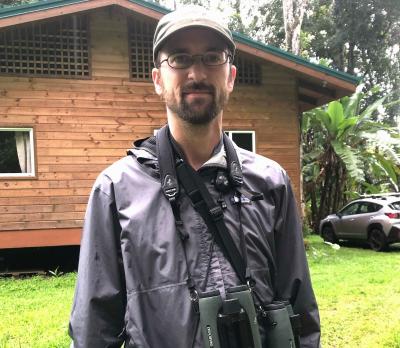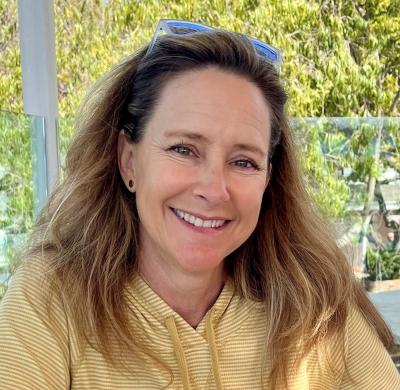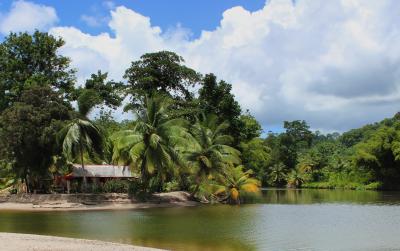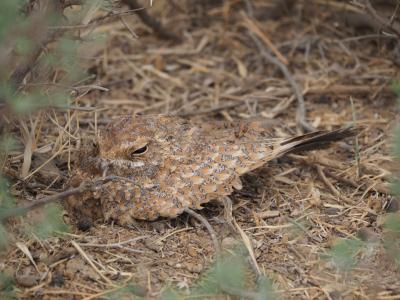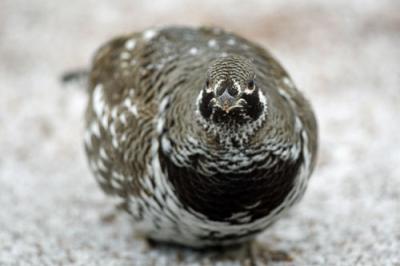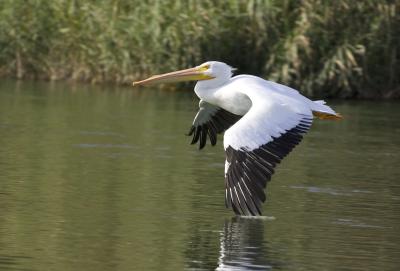Northwest Ohio: Spring Migration
-
May 13-19, 2026
Ethan Kistler
2026
Single Room Supplement $690
2026
Single Room Supplement $690
Branded as the “Warbler Capital of the World”, Northwest Ohio and the famous Magee Marsh boardwalk are one of the best areas to witness spring migration in North America! The convergence of several migration routes, the bird-blocking effect of Lake Erie, and a fine mix of habitats combine to produce a remarkable number and diversity of Neotropical migrants. Nearly all woodlots will be filled with song as breeding males work their way closer to their northern breeding grounds. Raptors and shorebirds should also be passing through in numbers, while we will be able to catch up with a good number of lingering waterfowl as well. This is a migration spectacle well worth experiencing!
In addition to Magee Marsh, we’ll visit a number of other productive and less crowded birding sites including Ottawa National Wildlife Refuge, Metzger and Howard Marshes, Pearson Metropark, Oak Openings Preserve, and—in southeast Michigan—Pointe Mouillee. Most days we’re likely to encounter more than one hundred species and we hope to see 30 species of warbler before the tour concludes.
Day 1: The trip begins at 6:00 p.m. in our hotel near the Detroit Metro Airport with a brief meeting followed by dinner. Night near Detroit Metro Airport.
Day 2: We’ll depart early for Pointe Mouillee State Game Area just north of the Ohio border. This 4,000-acre coastal wetland complex borders Lake Erie at the mouth of the Huron River and is a magnet for waterfowl, waterbirds, and shorebirds. If we hit it right, we should see hundreds of Dunlin and perhaps Short-billed Dowitcher and Black-bellied Plover among others. Black Tern, American White Pelican, and Yellow-headed Blackbird are locally uncommon, and we’ll keep an eye out for them. We’ll make several more stops en-route to Ohio, targeting Bobolink among others. In the late afternoon, we’ll check into our hotel and, if time permits, bird a local park before dinner. Night in Oregon, Ohio.
Days 3-5: With Oregon as our home base, we’ll spend the next three days birding countless hotspots in northwest Ohio. We’ll remain flexible as weather, winds, and bird reports will largely control when and where to bird. Our main stop will be the Magee Marsh boardwalk where sighting more than twenty species of warblers in a single day is not out of the question. We’ll also hope to see various species of vireos, flycatchers, thrushes, and cuckoos. We will also bird nearby productive woodlots such as Metzger Marsh, Ottawa National Wildlife Refuge, Pearson Metropark, and the Maumee Bay State Park boardwalk, keeping our eyes to the skies for migrating raptors—most notably Broad-winged Hawks. We’ll also bird several wetlands and flooded fields for waterfowl and shorebirds, especially Howard Marsh, which is a metropark that was only recently converted from farmlands to 1,000 acres of prime wetland habitat and has attracted nesting Black-necked Stilts, Wilson’s Phalaropes, and Yellow-headed Blackbirds—all three of which are rare breeders in Ohio! We’ll also search for American Pipit, Marsh Wren, and lingering ducks. An hour east, we’ll spend one morning birding a beautiful eastern hardwood forest where Cerulean and Yellow-throated Warblers breed. Rare near Magee, these local breeders are quite reliable at this local metropark and we will also keep an eye out for a few other resident breeders such as Acadian Flycatcher and Wood Thrush. One evening we’ll offer an optional night-birding excursion for rails,bitterns, and Eastern Whip-poor-will. Nights in Oregon.
Day 6: We’ll depart early for the forty-five-minute drive to Toledo’s largest Metropark, Oak Openings Preserve. This 5,000-acre park is predominately oak savanna which contains oak forest, grasslands, and vegetated sand dunes. Wild lupine blankets the forest floors while prickly pear and sand cherries grow on the shifting dunes. Our main targets are birds we won’t find elsewhere: Barred Owl, Pileated Woodpecker, Lark Sparrow, Blue Grosbeak, Summer Tanager, Henslow’s Sparrow, and Yellow-breasted Chat. Red-headed Woodpeckers are abundant, and we should be able to pick up a good selection of Neotropical migrants. After a full day of birding Oak Openings and its surroundings, we’ll make our way to Detroit. Night in Detroit.
Day 7: The tour concludes this morning in Detroit.
Note: The information presented below has been extracted from our formal General Information for this tour. It covers topics we feel potential registrants may wish to consider before booking space. The complete General Information for this tour will be sent to all tour registrants and of course supplemental information, if needed, is available from the WINGS office.
ENTERING THE UNITED STATES: Non-United States citizens will need a valid passport and may need a tourist visa. Consult your nearest U.S. Embassy or consulate for details.
PACE OF TOUR: The tour is moderately strenuous, with long days, early departures, and moderate walks. Most mornings we’ll depart before dawn or shortly thereafter. There may be a few afternoon breaks other than driving between spots. Most days we try to end our birding about 6:00 p.m. We may on occasion offer additional birding after dinner. Still, we often don’t retire until after 9:00 p.m. so this tour can be tiring. The terrain is fairly level throughout. On a few occasions, there will be the option of resting in the hotel rather than birding. However, if one has trouble walking, this tour will be difficult.
Bathroom Breaks: Restroom stops will be available at regular intervals throughout the day, and facilities are present at most birding sites we visit on this tour.
HEALTH: Ohio and Michigan present no real hazards to the visiting birdwatcher.
Insects and Arachnids: Biting insects are occasionally a problem in northern Michigan and possibly elsewhere if it is a very early spring. It is best to have bug repellent along just in case. We recommend using insect repellents with a high concentration of DEET. Care must be taken, however, to avoid getting the DEET repellent on optical equipment as DEET dissolves rubber and plastic and can damage coated lenses. Camping supply stores and outfitters carry some reasonably effective alternatives, which contain natural products and aren’t corrosive.
Dog ticks are present in numbers in grassland areas throughout and it is best to check yourself carefully if we walk into a field. These large ticks are readily visible, unlike the smaller deer ticks, and usually take their time before trying to attach, so careful inspections after walking in tick areas is well advised. It is unclear how effective repellent is in keeping them off you.
Smoking: Smoking is prohibited in the vehicles or when the group is gathered for meals, checklists, etc. If you are sharing a room with a nonsmoker, please do not smoke in the room. If you smoke in the field, do so well away and downwind from the group. If any location where the group is gathered has a stricter policy than the WINGS policy, that stricter policy will prevail.
CLIMATE: Mid-May weather in the Midwest can be extremely variable with temperatures possibly ranging from the mid-30s (rarely) to the high 80s F. Some rain, occasionally much rain (rarely snow!), is likely during the course of the week as various weather systems pass through and it can be windy as well. Bring warm clothes!
FOOD: Food is North American standard. Lunches will be a mix of picnics (as weather permits) and quick service restaurants.
WINGS tours are all-inclusive, and with the exception of WINGS tours to destinations in the US, no refunds can be issued for any tour meals participants choose to skip.
Food Allergies / Requirements: We cannot guarantee that all food allergies can be accommodated at every destination. Participants with significant food allergies or special dietary requirements should bring appropriate foods with them for those times when their needs cannot be met. Announced meal times are always approximate depending on how the day unfolds. Participants who need to eat according to a fixed schedule should bring supplemental food. Please contact the WINGS office if you have any questions.
TRANSPORTATION: We will be traveling by 15- [or 12-] passenger window van or minivan, depending on the group size. When using 15-passenger window vans, we will take a maximum of seven passengers plus the leader/driver. Participants should be able to ride in any seat in our tour vehicles.
PHOTOGRAPHY: Scenery and memory shots will be plentiful and simple to obtain but birds are difficult to photograph, though conditions at Magee Marsh and nearby areas provide outstanding opportunities to photograph migrant eastern birds. We suggest a digital camera or a 35mm camera for scenes and for chance
bird photographs. A telephoto lens is virtually essential for bird photography. “Digiscoping” is perfectly compatible with the tour, though you should bring your own telescope. If you are a serious photographer, please contact us for further information about photography on a birding tour. Camera equipment should be packed in moisture- and dust-proof bags, as a precaution.
2025 Narrative
In Brief:
When someone mentions spring migration in the U.S., Northwest Ohio, particularly around Magee Marsh, is often one of the most talked about destinations. Several migratory routes converge here, and the Lake Erie shoreline often creates a bird-blocking effect, grounding birds. By now they are nearing their northern breeding grounds and are in full song. With such a migration spectacle, we focus this tour in one area which prevents the need for long drives and constant hotel changes. We took advantage of excellent weather, delicious local lunch and dinner stops, and of course an excellent migration. Starting near Detroit, we visited Pte Mouilee where we had a nice selection of waterfowl and shorebirds before continuing into Ohio. Over the next several days we focused on birding all of the local hotspots including Magee Marsh, Ottawa NWR, Metzger Marsh, Howard Marsh, Pearson Metropark, and Oak Openings Metropark along with a few other hidden gems where we tallied an impressive list of warblers, thrushes, cuckoos, vireos, etc. One morning we headed east into an area of healthy deciduous forests where we picked up a few resident breeders including Cerulean and Yellow-throated Warblers. Overall, it was a very successful trip!
In Detail:
Day 1: The tour began near the Detroit Airport where we had our introductory meeting followed by an excellent Italian dinner. The birding already began with Warbling Vireo, Nashville Warbler, and White-crowned Sparrow being some of the birds recorded from the parking lot.
Day 2: Just a short drive from our hotel brought us to Pointe Mouillee State Game Area, located along the western shores of Lake Erie. This vast expanse of bays, wetlands, and mudflats spans thousands of acres. With special access, we were able to drive deep into the area and cover a large amount of ground efficiently.
Our primary focus here was waterfowl, and we were rewarded with sightings of 17 species. Highlights included Trumpeter Swan, American Black Duck, Canvasback, Redhead, Ring-necked Duck, both Greater and Lesser Scaup, Ruddy Duck, and a lingering Surf Scoter, among others.
We also encountered six species of shorebirds, most notably a flock of over 500 Dunlin. Other sightings included Black-bellied Plover, Killdeer, Lesser Yellowlegs, and both Spotted and Least Sandpipers.
Additional highlights included four species of terns, most notably the striking Black Tern, along with at least 70 American White Pelicans, a species that has seen a rapid population increase in this region. We also observed Northern Harrier, six species of swallows, Marsh Wren, Palm Warblers working the phragmites, and no fewer than 18 Bald Eagles.
Before lunch, we visited a nearby farm area known for breeding Bobolinks. We were quickly treated to excellent views of this charismatic, R2D2-sounding bird. Other additions in the area included Horned Lark, Northern Flicker, and a pair of Sandhill Cranes.
After lunch, we continued south into Ohio and made our way to the famous Magee Marsh boardwalk to get our first taste of its renowned spring migration. We spent several leisurely hours birding the boardwalk and recorded 15 species of warblers: Northern Waterthrush, Prothonotary, Nashville, Common Yellowthroat, Cape May, American Redstart, Northern Parula, Magnolia, Blackburnian, Yellow, Chestnut-sided, Black-throated Blue, Palm, Yellow-rumped, and Black-throated Green.
In addition to the warblers, we also saw Baltimore Oriole, Rose-breasted Grosbeak, Indigo Bunting, and Ruby-throated Hummingbird, among other songbird highlights.
Day 3: West of Toledo lies Oak Openings Metropark, the largest metropark in the region, encompassing over 5,000 acres of diverse, bird-rich habitats, including its signature oak savanna.
On the way there, we made a quick stop at a small metropark where a couple of Henslow’s Sparrows had recently been reported. The area provided a pleasant mix of species, including Wood Duck, Eastern Kingbird, Wood Thrush, Eastern Bluebird, Orchard Oriole, and our first Tennessee Warbler of the trip. After some searching, we successfully located a pair of Henslow’s Sparrows, along with Chipping, Field, Savannah, and Song Sparrows.
At Oak Openings, we focused on a trail that runs through an area impacted by a tornado a few years ago, which has since developed into productive scrubby habitat. This spot yielded several great finds, including Red-headed Woodpecker, White-eyed Vireo, Veery, Eastern Towhee, Yellow-breasted Chat, and three more warbler species: Black-and-white, Blue-winged, and Ovenbird.
Following lunch, we explored an open oak savanna, home to one of the few breeding populations of Lark Sparrow in the state. True to form, they were active and vocal, offering excellent views. In the surrounding oak woodlands, we also picked up Yellow-throated Vireo and Summer Tanager.
As we made our way back toward the hotel, we stopped at a newly created wetland, thanks to ongoing local conservation efforts, where we added Virginia Rail and Sora to our growing list.
After dinner, we capped off the day with the obligatory American Woodcock stakeout at dusk—and it did not disappoint. We heard one “peenting” nearby, then watched as it performed multiple aerial displays, flying just overhead several times to the delight of the group.
Day 4: With promising overnight winds hinting at a turnover in migrants, we returned to the Magee Marsh boardwalk and spent much of the morning birding both the boardwalk and the estuary trail. As expected, warblers stole the show. We picked up our first Blackpoll Warbler of the trip, but the true highlight came in the form of a Kirtland’s Warbler—a major tour favorite! Initially elusive, skulking deep in the brush along the beach, the bird eventually gave us excellent views after a bit of patience.
Although hard to top, we pressed on and added several more noteworthy species, including Sharp-shinned Hawk, Blue-headed Vireo, and a couple of flyover Pine Siskins. One particularly striking sight was the steady stream of hundreds of Blue Jays migrating overhead, a signature feature of birding the Lake Erie shoreline.
We then visited the nearby Ottawa National Wildlife Refuge, birding the trails behind the visitor center and visiting the coffee vendor for a midday caffeine boost. The standout on the trails here was an delightful Eastern Screech-Owl roosting above the trail.
We took a brief midday break to enjoy a local gem where we enjoyed delicious BBQ Pulled Pork Sandwhiches and buckeye flurries.
Our final stop took us to the west side of Howard Marsh—a remarkable restoration success story, having been transformed from farmland into thriving wetland habitat in just a few years. Here we tallied our first American Wigeons, along with localized breeding Black-necked Stilts, two Wilson’s Phalaropes, and an unexpected bonus: a Neotropic Cormorant mixed in with a large group of Double-crested Cormorants.
Day 5: The winds overnight shifted and were quite unfavorable for any new migrants to move in, so we opted to head east towards Cleveland to target a few resident breeders. We spent the morning birding Vermilion River Reservation which consists of primary deciduous forests with a sycamore lined Vermilion River passing right through. Our main targets here were Cerulean and Yellow-throated Warbler; both species are quite rare as passage migrants in the Magee region. It didn’t take long before we heard both of these gorgeous warblers and we eventually tracked down the songsters, obtaining excellent views. The park was very productive with 13 species of warblers in total, a couple Pileated Woodpeckers, and tons of Indigo Buntings on territory.
In the afternoon we returned to the Magee Marsh boardwalk where we enjoyed more of what makes the region famous. There, we picked up a lingering Pine Warbler, but also just enjoyed the abundance of migrants completely oblivious to our presence often close enough where you could just reach out and grabbed them. The local breeding Prothonotary Warblers were no exception and at times approached people within a half-foot away!
Metzger Marsh had more of the same including 50 Trumpeter Swans, a lone Lesser Scaup, a Black-necked Stilt, and large numbers of Common Terns, which breed on artificial nesting platforms provided by the metropark next door.
Our final stop of the day was Pearson Metropark only a mile from our hotel. This large metropark has an abundance of trails that meander through woodlands and grasslands and is often one of the best spots for migrants. Again, warblers stole the show with the likes of Cape May, Magnolias, Blackburnians, Chestnut-sided, Black-throated Blue, and then suddenly a gorgeous jaw-dropping Golden-winged Warbler! An excellent finish to the day.
Day 6: By now, we’ve had a very successful trip with very few outstanding species, so we headed back to the Magee Marsh boardwalk one last time to soak in migration before slowly working our way back towards Detroit. We still managed to add a few more species including a very late Hermit Thrush and the first Bay-breasted Warblers to show up which continued to be present at all of our stops throughout the day.
A Hooded Warbler, a species we were still missing, was reported behind the Black Swamp Bird Observatory office so we devoted a good amount of time with lunch in hand, waiting for a reappearance. We eventually had some distant brief views bringing out warbler count to 29 species. It was also a great area for thrushes with Swainson’s, Wood, and Veery all putting on a show.
We began the short journey back towards Detroit stopping at a metropark in Toledo where a Mourning Warbler had been heard singing that morning. Mid-day our chances were slim as this species usually goes quiet during the day. Despite our efforts, we dipped, but still had an enjoyable time birding along the Maumee River. A Red-headed Woodpecker worked a dead tree, a Great Crested Flycatcher could be heard calling throughout our visit, Rose-breasted Grosbeaks were common, and various warblers added more color to the green foliage.
We arrived at Detroit in the early evening and enjoyed a wonderful final dinner together. The group’s top five birds were tallied and were: Chestnut-sided Warbler, Henslow’s Sparrow, Blackburnian Warbler, Prothonotary Warbler, and Kirtland’s Warbler winning 1st!
Day 7: Flights home.
- Ethan Kistler, 2025
Ethan went above and beyond to ensure we all had an enjoyable, insightful, and exciting trip. His extensive knowledge and passion were evident from day one. This was my first birding tour and it was enthralling. I couldn’t have asked for a better experience.
- Amanda T. on Northwest Ohio: Spring Migration
I was so impressed at how well Ethan managed personalities, different skill levels...And of course, how knowledgeable about the birds and the area in general he is, and how patient, kind and how understandable his explanation of field marks and habitat clues.
- Carol L. on Northwest Ohio: Spring Migration
Ethan did a great job finding us birds under challenging weather conditions, and his knowledge of the local area was encyclopedic. He was always optimistic and professional. He was also a safe driver!
- Participant on Northwest Ohio: Spring Migration
Maximum group size seven with one WINGS leader









